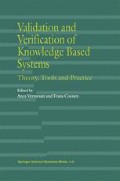Abstract
Except for a couple of rigorous software certification schemes that are required for certain safety-critical software applications (e.g., RTCA DO178-B), there are no generally trusted software certification schemes. While there is no theoretical reason why these safety-critical standards could not be applied to all applications, there is a practical reason: cost. Estimates vary, but it is generally accepted that a line of safety-critical software costs between $500-$5,000 to design, write, test, and certify. Such levels of rigor and quality are excessive for most nonsafety—critical applications.
Nonetheless, a ubiquitously accepted process which provides guarantees about software quality is still needed. These guarantees must be product-based and trustworthy. This paper presents a certification process we believe satisfies this need. Our process collects appropriate data that can then be used to stamp limited warranties onto commercial software.
Access this chapter
Tax calculation will be finalised at checkout
Purchases are for personal use only
Preview
Unable to display preview. Download preview PDF.
References
Bingley, L. (1995). Pure Vision: Shedding Light on Black Art Betas. APT Data Services, Inc, New York, June, p17.
Miller, B. P. et. al (1995). Fuzz revisted: A re-examination of the reliability of UNIX utilities and services. Technical report, University of Wisconsin, Computer Sciences Dept, November.
Pavlopoulou, C. (1997). Residual Coverage Monitoring of Java Programs. Master’s Thesis, Purdue University, August.
Miller, B.P., Fredrikson, L., and So, B. (1990). An empirical study of the reliability of UNIX utilities. Communications of the ACM, 33 (12), pp 32–44.
Voas, J. (1997). Can Clean Pipes Produce Dirty Water?. IEEE Software, 14(4), pp93–95.
Voas, J. (1998). Software Certification Laboratories: To Be or Not to Be Liable? Crosstalk, 11(4), pp21–23.
Voas, J. (1998). The Software Quality Certification Triangle. Crosstalk, 11(11), pp12–14.
Author information
Authors and Affiliations
Editor information
Editors and Affiliations
Rights and permissions
Copyright information
© 1999 Springer Science+Business Media New York
About this chapter
Cite this chapter
Voas, J. (1999). User Participation-Based Software Certification. In: Vermesan, A., Coenen, F. (eds) Validation and Verification of Knowledge Based Systems. Springer, Boston, MA. https://doi.org/10.1007/978-1-4757-6916-6_18
Download citation
DOI: https://doi.org/10.1007/978-1-4757-6916-6_18
Publisher Name: Springer, Boston, MA
Print ISBN: 978-1-4419-5107-6
Online ISBN: 978-1-4757-6916-6
eBook Packages: Springer Book Archive

